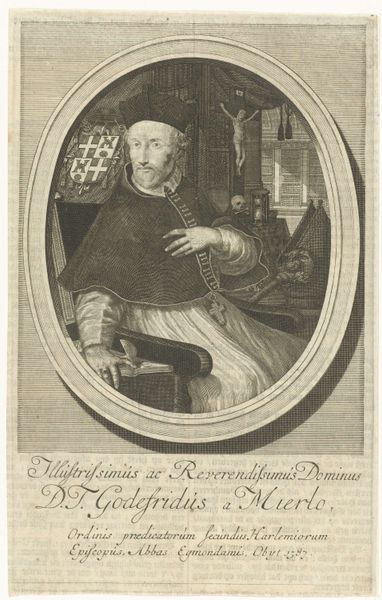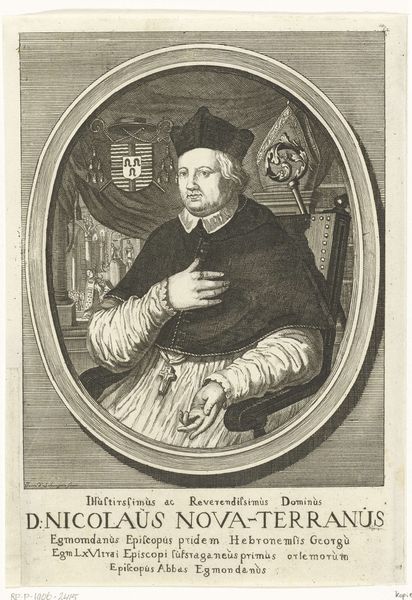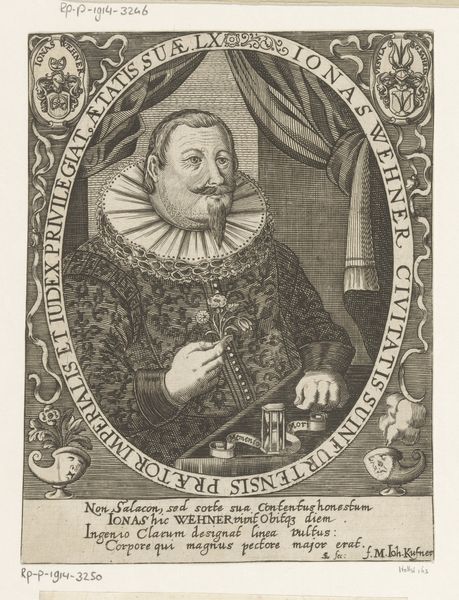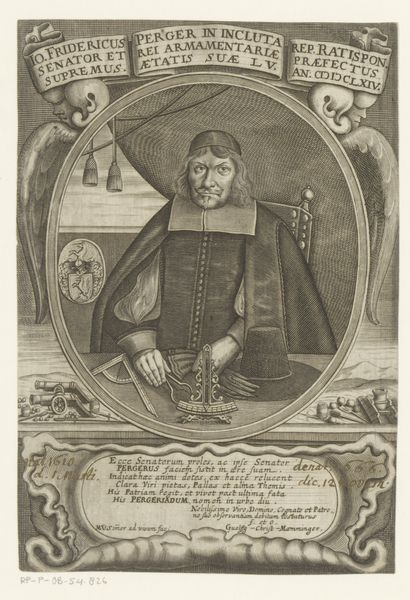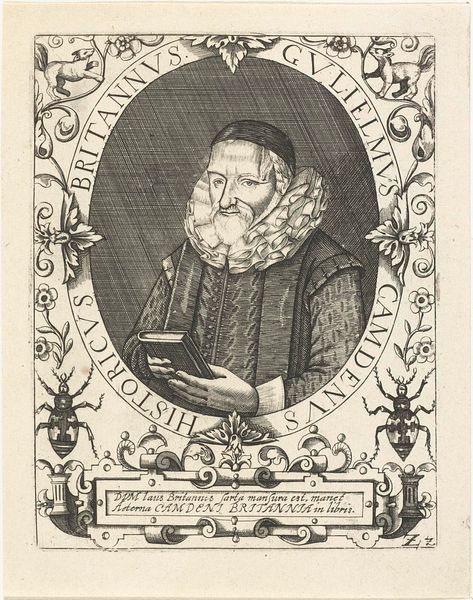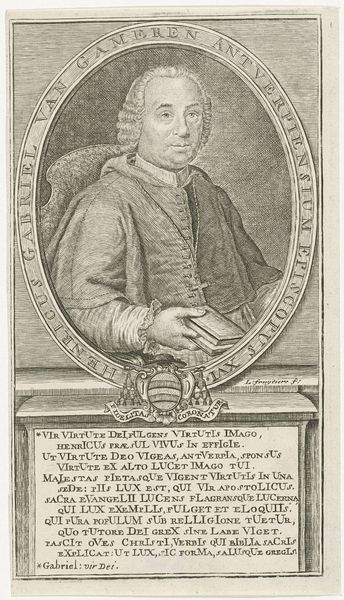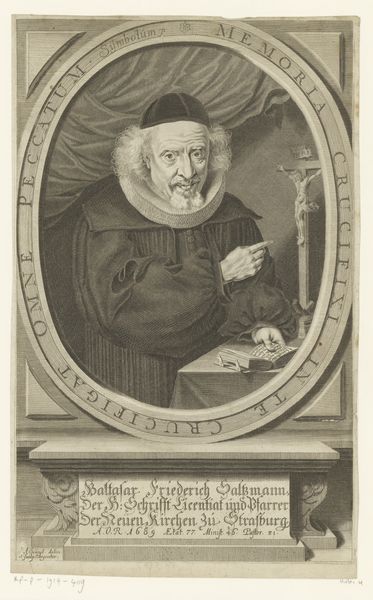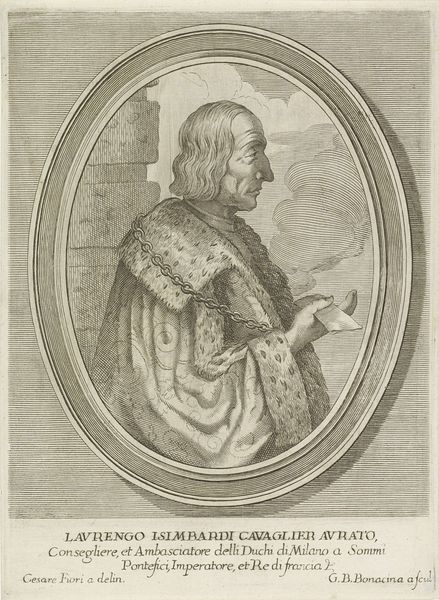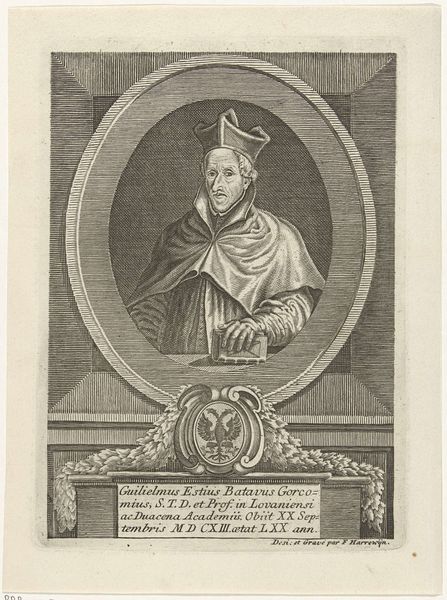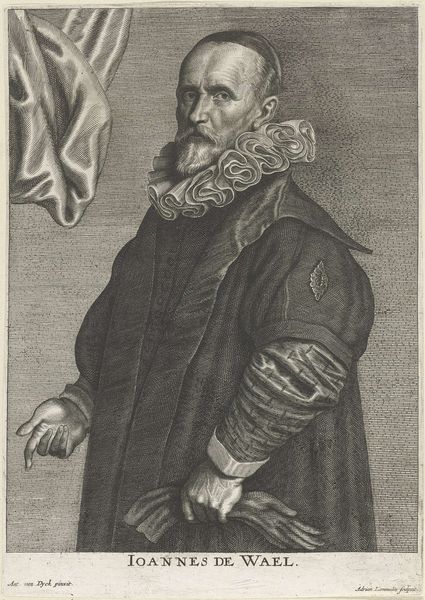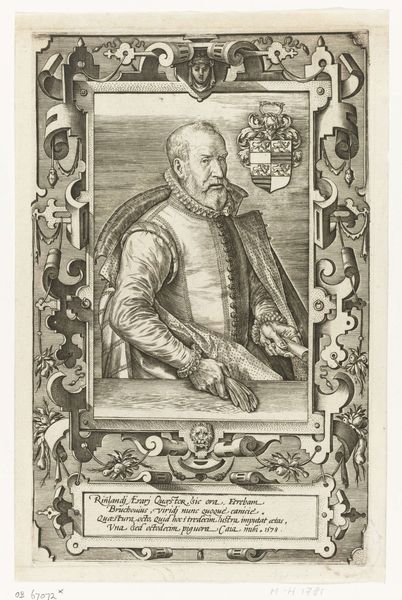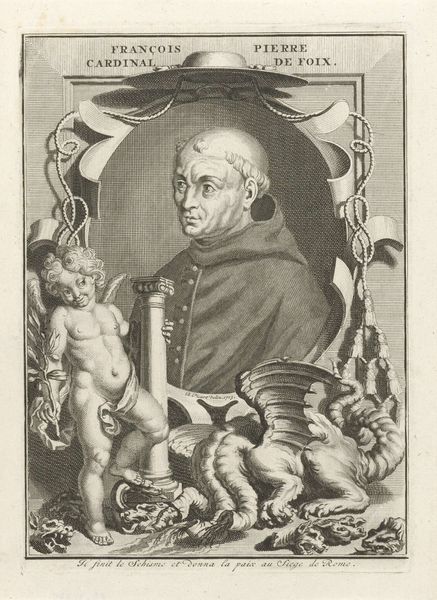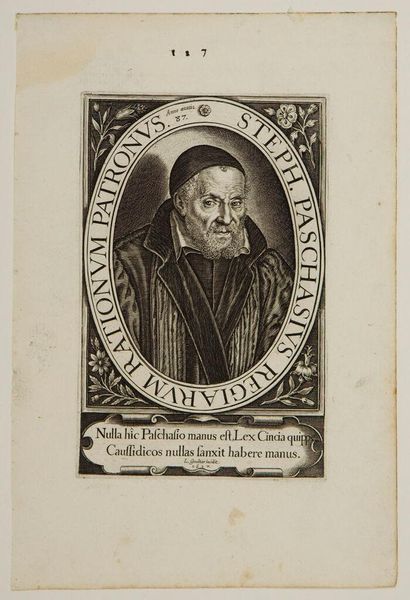
Portret van Frederik Schenk van Toutenburg, aartsbisschop van Utrecht 1681 - 1726
0:00
0:00
francoisvanbleyswijck
Rijksmuseum
drawing, print, engraving
#
portrait
#
drawing
#
baroque
# print
#
old engraving style
#
historical photography
#
engraving
Dimensions: height 191 mm, width 157 mm, height 53 mm, width 157 mm
Copyright: Rijks Museum: Open Domain
Curator: Here we have an engraving, “Portret van Frederik Schenk van Toutenburg, aartsbisschop van Utrecht,” by François van Bleyswijck, dating from between 1681 and 1726. Editor: It strikes me as severe, even a little unsettling. The crisp lines of the engraving create this formal, almost rigid depiction, and that swirling apparition in the top right certainly contributes to the overall strange feeling. Curator: It's the materiality that interests me. Consider the labor involved in creating such a detailed engraving. The tools, the skill, the socio-economic context of printmaking in the late 17th and early 18th centuries. This wasn't just art; it was a form of communication, a tool of power. The inscription below reinforces the sitter’s status as a member of the church hierarchy. Editor: And I am immediately drawn to the composition. The oval frame contains not only the portrait of the Archbishop, with that very specific pose and expression, but also a secondary scene, seemingly a council or meeting, rendered in miniature and, oddly, framed by what appears to be a cloud or smoke. It's as if his thoughts are being visually projected. What do you make of that placement, that visual association? Curator: It speaks to the labor of governance, of the social construction of religious authority. Look at the means by which he accrued power: not through divine intervention but through councils, agreements, social maneuvering. This print is a carefully crafted object of consumption meant to circulate among specific social classes, reinforcing established hierarchies. Editor: Yet there is a visual tension. The precision of the portrait contrasts with the almost dreamlike quality of that secondary scene. This contrast serves a formal purpose: a semiotic dance between reality and vision, power and… perhaps doubt? Curator: I see the image through its historical moment, produced by skilled labor and a consumer product for a select audience, and of that hierarchy of labor which defined Baroque printmaking, I'm left with more questions than answers. Who were the engravers? What was their place in the economic and social order of the period? Editor: The way the artist, van Bleyswijck, managed the pictorial space to frame meaning is impressive. Regardless of social forces behind its creation, as you note, that's formal mastery. I walk away contemplating the visual language of power—how posture, composition, and the skillful play of light and shadow all work to convey authority.
Comments
No comments
Be the first to comment and join the conversation on the ultimate creative platform.
